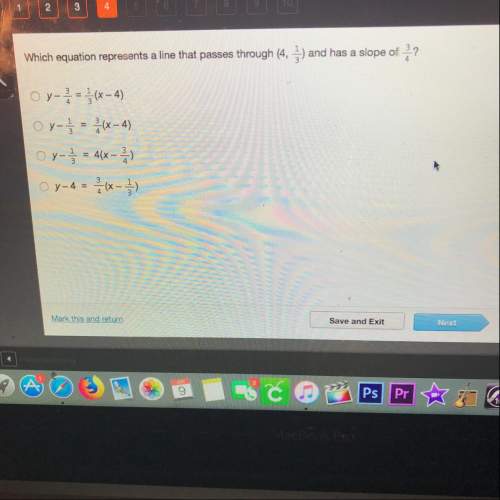
Mathematics, 17.01.2020 00:31, saabrrinnaaa
Clara writes the following proof for the theorem: if the diagonals of a quadrilateral bisect each other, the quadrilateral is a parallelogram:
clara's proof
for triangles aob and cod, angle 1 is equal to angle 2, as they are vertical angles.
ao = oc and bo = od because it is given that diagonals bisect each other.
the triangles aob and cod are congruent by sas postulate.
similarly, triangles aod and cob are congruent.
by angle abd is equal to angle cdb and angle adb is equal to angle cbd.
as the alternate interior angles are congruent, the opposite sides of quadrilateral abcd are parallel.
therefore, abcd is a parallelogram.
which is the missing phrase in clara's proof?
cpctc
property of parallelograms
transitive property
vertical angles theorem

Answers: 1
Other questions on the subject: Mathematics

Mathematics, 21.06.2019 18:40, stephen4438
Which of the following represents the range of the graph of f(x) below
Answers: 1

Mathematics, 21.06.2019 18:50, trevionc0322
Which of the following values cannot be probabilities? 0.08, 5 divided by 3, startroot 2 endroot, negative 0.59, 1, 0, 1.44, 3 divided by 5 select all the values that cannot be probabilities. a. five thirds b. 1.44 c. 1 d. startroot 2 endroot e. three fifths f. 0.08 g. 0 h. negative 0.59
Answers: 2

Mathematics, 21.06.2019 20:00, 4804397217
A. what does the point (4, 122) represent? b. what is the unit rate? c. what is the cost of buying 10 tickets?
Answers: 2

Mathematics, 21.06.2019 21:30, natalieburnett82
Ihave a triangle with a 60 degree angle. lets use d for that angle. what are the values of e and f if d is 60 degrees? and what do you notice about the values of e and f?
Answers: 2
Do you know the correct answer?
Clara writes the following proof for the theorem: if the diagonals of a quadrilateral bisect each o...
Questions in other subjects:






Spanish, 10.07.2019 10:30

History, 10.07.2019 10:30



English, 10.07.2019 10:30







